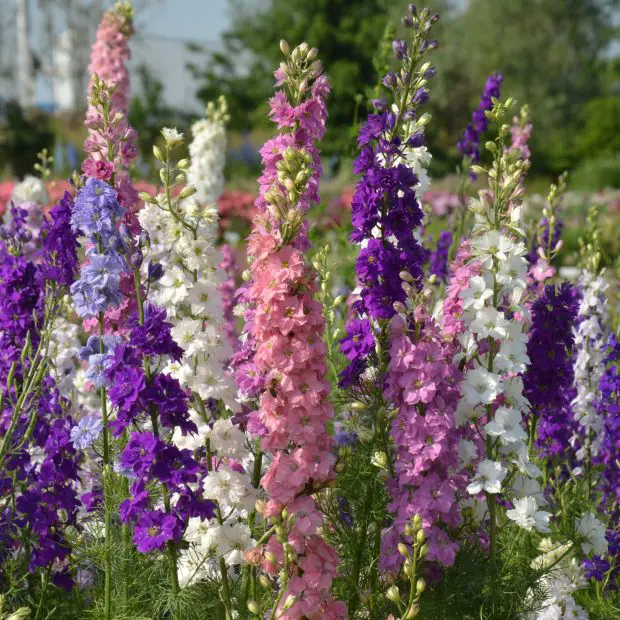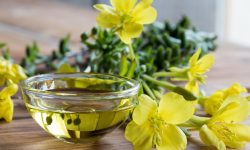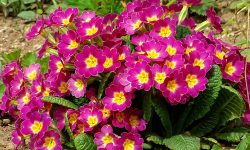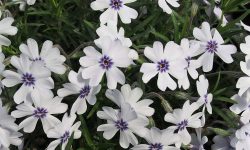Few garden flowers capture the imagination quite like delphiniums. With their towering spires of vivid blues, purples, and whites, these blooms add a sense of grandeur and romance to any landscape. But to truly enjoy their spectacular show, timing is everything—knowing when delphiniums bloom in your region makes all the difference between a fleeting display and a season full of color.
Whether you’re a seasoned gardener in the Pacific Northwest or just getting started in a colder zone, understanding the regional bloom patterns of delphiniums can help you plan, plant, and care for them more effectively. This guide offers clear, practical insights tailored to your climate so you can enjoy the full beauty and potential of these enchanting perennials.
Factors That Influence Bloom Time

Climate and Temperature
Delphiniums are highly responsive to climate, thriving best in regions with mild temperatures and cool nights. Their ideal growing range is between 60°F and 75°F (15°C to 24°C), which allows them to develop strong stems and large, vibrant flower spikes. In climates where temperatures routinely exceed 80°F (27°C), blooming may be brief or even fail to occur, especially without sufficient nighttime cooling. In USDA Zones 3 to 6, the growing season starts later in spring, so blooms typically emerge from late June through July. However, in Zones 7 and 8, where spring arrives earlier, delphiniums may bloom as early as late April or May and may even produce a second flush in fall if summer temperatures aren’t too harsh. In hot and humid southern regions, delphiniums are often treated as cool-season annuals, grown during winter and early spring for the best bloom performance.
Sunlight and Location
Sun exposure plays a critical role in how well delphiniums bloom. These plants crave sunlight and require at least six hours of direct exposure daily to thrive. Insufficient light can result in spindly stems, sparse flowers, and faded colors. In northern climates, full sun throughout the day is ideal, while in warmer southern zones, protection from the intense afternoon sun is beneficial. Placing delphiniums in east-facing beds or areas that receive filtered sunlight in the afternoon can reduce heat stress and prevent wilting. Proper air circulation is also important, especially in humid climates, as it helps deter fungal diseases that could compromise bloom quality. Choose open, well-ventilated planting areas with strong morning light for best results.
Soil and Nutrient Conditions
Delphiniums demand fertile, nutrient-rich soil that drains well yet retains consistent moisture. Their deep root systems prefer loamy, slightly alkaline soil with a pH between 6.5 and 7.5. Poor or compacted soils limit root growth and flowering potential. Before planting, work in plenty of aged compost or well-rotted manure to enrich the soil. During the growing season, regular feeding with a balanced 10-10-10 fertilizer helps maintain vigorous bloom production. Avoid excessive nitrogen, which can promote lush foliage at the expense of flowers. In high-rainfall areas or heavy soils, raised beds can improve drainage and prevent root rot. Mulching with organic material also helps moderate soil temperature and moisture, giving your delphiniums the steady conditions they need to thrive.
Pruning and Deadheading
Timely pruning and deadheading are essential for prolonging the bloom season of delphiniums. After the initial bloom fades, cut flower spikes down to the base or just above a healthy set of leaves to stimulate new shoots. In cooler climates, this often results in a robust second bloom in late summer or early fall. Regular deadheading prevents the plant from expending energy on seed production, redirecting its resources toward new flowers instead. Additionally, removing spent blooms improves airflow and reduces the risk of fungal diseases, particularly in damp or humid conditions. In late fall, once the plant has gone dormant, cut back all foliage to ground level to promote healthy regrowth in the spring. For continued bloom success year after year, divide mature clumps every 3 to 4 years and replant them in fresh soil enriched with compost.
When Do Delphiniums Bloom in USDA Hardiness Zones
Zone 3–4: Late Bloomers in Cold Climates
In the frigid northern regions of USDA Zones 3 and 4—such as parts of Montana, Minnesota, and Canada—delphiniums bloom later than in milder climates. Flowering typically begins in late June and may extend into July, depending on the weather. The short growing season, combined with cool spring temperatures, delays plant development, making early blooming unlikely. A second flush of flowers is rare unless the summer is long and mild. To get a head start on blooms, gardeners in these zones are encouraged to start seeds indoors 8–10 weeks before the last frost date or purchase well-established transplants. Protection from late spring frosts and rich, well-drained soil are essential to support healthy blooms.
Zone 5–6: Ideal Blooming Conditions
Delphiniums thrive in Zones 5 and 6, which cover much of the northern and central United States. In these regions, the growing season is long enough to support both spring and fall blooms, provided the plants are well cared for. Blooming typically begins in late May to early June and may continue into July. With consistent deadheading and adequate watering, delphiniums can often produce a second bloom in early fall, especially in Zone 5. These zones also provide the cold winters delphiniums need for dormancy, allowing them to return year after year as vigorous perennials. Fertile soil, full sun, and support stakes are all helpful in keeping plants upright and blooming profusely.
Zone 7–8: Early Blooms with Careful Management
In the warmer climates of Zones 7 and 8—covering much of the southern and mid-Atlantic United States—delphiniums tend to bloom earlier, often starting in late April or early May. However, the intense heat of summer can shorten the blooming period and cause stress. Delphiniums in these zones benefit greatly from morning sun and afternoon shade, along with consistent moisture and thick mulch to keep root temperatures cool. A second bloom is possible in late summer or fall, but it requires careful attention during the hottest months to prevent the plants from declining. Choosing heat-tolerant varieties and improving soil drainage can also increase success rates in these zones.
Zone 9–10: Challenging But Possible
Zones 9 and 10, which include parts of southern California, Texas, and Florida, present significant challenges for growing delphiniums. These areas have very mild winters and hot, dry summers—conditions that traditional delphinium varieties struggle to tolerate. To achieve blooms, gardeners often need to treat delphiniums as cool-season annuals, planting them in late fall or early winter so that they bloom in early spring, typically around March or April. By late spring, the heat can cause plants to wither or bolt. Afternoon shade, regular watering, and well-mulched beds are essential for extending bloom time. Heat-tolerant cultivars or hybrid varieties bred for southern gardens may offer better results in these zones.
Regional Tips to Maximize Blooming Success
Northeast
The Northeast’s combination of snowy winters and cool, moist springs creates ideal conditions for growing delphiniums. Begin seeds indoors around February or plant nursery transplants in early April when the soil becomes workable. With proper spacing and rich soil, expect a vibrant bloom window from mid-June through early July. Regular deadheading may encourage a smaller second flush in late summer or early fall, especially in northern areas with milder summers.
Midwest
Delphiniums thrive in much of the Midwest, especially where spring is mild and summer heat is moderate. For southern or central areas where humidity spikes in July, prioritize airflow by spacing plants generously and avoiding overhead watering. Incorporate compost into the soil at planting and mulch heavily to regulate moisture and temperature. Watch for powdery mildew, and stake tall varieties early in the season for sturdy growth and consistent flowering in early to mid-summer.
Pacific Northwest
The Pacific Northwest’s cool temperatures and frequent rainfall are nearly tailor-made for delphiniums. Start seeds indoors in late winter or plant out hardened seedlings by mid-spring. Extended blooming typically occurs from late May through July. However, excessive moisture can cause root rot or crown issues—ensure beds are raised and well-draining. Staking is essential due to frequent breezes and tall growth. With good care, flowers may rebloom in early fall.
Southeast
In the Southeast, the biggest challenge is heat and humidity. Delphiniums may struggle unless you adjust your planting strategy. Opt for compact or heat-tolerant cultivars, and grow them as winter annuals by planting in late autumn or very early spring. Raised beds or containers help improve drainage. Mulch helps cool the root zone, while partial afternoon shade protects blooms from scorching. Expect shorter bloom cycles, typically in March or April.
Southwest
The dry, sunny climate of the Southwest presents several obstacles to delphinium care, but success is still possible. Use drip irrigation to keep soil moist without encouraging fungal issues. Soil should be amended with compost or organic matter to retain moisture, and mulch is critical to keeping root zones cool. Choose a planting site that receives bright morning sun but dappled shade after noon. Blooms are usually short-lived in April or May, so succession planting or early sowing is key.
Mountain West
Delphiniums flourish in the Mountain West, where cool nights and mild daytime temperatures provide optimal growing conditions. Plant in spring once the threat of frost passes. Rich, well-drained soil and consistent watering help fuel tall spikes of blooms from late May to July. Because winds can be intense at higher elevations, staking is important. Apply a balanced fertilizer once buds form to encourage maximum flower production.
Southern California
Southern California’s mild winters and early springs make it possible to grow delphiniums as annuals. Plant out seedlings in February or March to enjoy spring blooms before high summer temperatures arrive. Site selection is crucial—aim for morning sunlight and afternoon shade to preserve blooms and avoid heat stress. Maintain a regular watering routine, especially in inland areas where conditions dry out quickly. Bloom time usually peaks between March and May before plants fade in the summer heat.
Maintaining Long-Term Blooming Success
Choosing the Right Variety
Selecting the right delphinium variety is essential for long-lasting blooms and successful cultivation in your climate. ‘Pacific Giant’ and ‘Magic Fountain’ are excellent for gardeners in cooler zones, offering tall spikes and classic cottage garden appeal. In contrast, varieties like ‘Delphina’ and ‘Mini Stars’ are dwarf types that perform better in warmer or more humid conditions. Look for cultivars labeled as heat-tolerant or mildew-resistant if you live in the South or coastal areas. Re-blooming types can offer a second flush of flowers with proper deadheading and feeding, extending color well into summer.
Supporting Tall Flower Spikes
Delphiniums are famous for their towering floral spires, but these can be top-heavy and vulnerable to wind or rain damage. Provide strong support from the moment the plant begins developing vertical growth. Bamboo stakes, hoop supports, or even decorative metal cages can be effective, depending on the variety’s height. Tie stems loosely with soft twine or garden clips, securing them at multiple points to prevent snapping. Early staking not only keeps the plant upright but also helps maintain airflow between stems, reducing the risk of fungal disease.
Pest and Disease Management
Delphiniums are susceptible to a few persistent pests and diseases. Slugs often chew on new shoots in spring, while aphids and spider mites feed on foliage and flower buds. Powdery mildew and botrytis can also develop in humid or poorly ventilated environments. Keep the area around plants clean and free of debris, and inspect leaves regularly. Use organic slug baits or copper tape to deter mollusks, and apply insecticidal soap or neem oil to control insect outbreaks. For fungal issues, avoid overhead watering and consider spacing plants farther apart to enhance air circulation.
Watering Practices
Proper watering is key to maintaining vibrant blooms throughout the season. Delphiniums thrive in consistently moist, well-drained soil. They are not drought-tolerant, and even short dry spells can result in dropped buds or scorched foliage. However, overwatering can be equally harmful, leading to root rot or fungal infections. Water deeply at the base early in the day to ensure moisture reaches the roots without wetting the foliage. Apply a thick layer of organic mulch—such as shredded bark or compost—to help the soil retain moisture and suppress weeds.
Fertilizing for More Blooms
To get the most floral output from your delphiniums, proper fertilization is essential. Begin feeding in early spring when new growth appears, using a slow-release or water-soluble fertilizer with a balanced NPK ratio such as 10-10-10. For enhanced blooming, switch to a phosphorus-rich formula (e.g., 5-10-5) just before the budding stage. After the first flush of flowers, a second dose of bloom-boosting fertilizer can encourage new stems and prolong flowering into late summer. Avoid excessive nitrogen, which encourages lush foliage but reduces the number of flower spikes.
Dividing and Propagating Delphinium
When and Why to Divide Plants
Dividing delphinium plants every three to five years is not just about managing space—it’s essential for maintaining vigorous blooming and plant health. As these perennials mature, their root systems expand, leading to congestion in the crown and competition for nutrients. This often results in fewer blooms and weaker stems. By dividing the plant, you essentially reset its growth cycle, giving each new clump more room, access to fresh nutrients, and a renewed ability to produce those iconic towering spikes of color.
The timing of division is key. Early spring—just as new growth emerges—is ideal in colder regions because it gives the plant a full season to establish before winter. In warmer climates, late summer or early fall after blooming is preferable, allowing root development in cooler soil temperatures. Avoid dividing during periods of extreme heat or active flowering, as stress can delay reestablishment and reduce bloom performance the following season.
How to Divide Successfully
Begin by cutting back the stems to a manageable height, then use a sharp spade or garden fork to lift the entire clump from the soil. Be gentle during this process to avoid damaging delicate roots. Shake off excess soil and locate the natural divisions in the crown. With your hands or a clean knife, separate the clump into smaller sections, each containing several buds or shoots and a healthy portion of roots. Avoid using divisions that are too small or that have rotted or dried-out roots. Once divided, replant immediately into fertile, well-drained soil enriched with compost. Space the divisions at least 18 inches apart to give each plant room to grow. Water deeply after planting and apply a layer of mulch to retain moisture and minimize transplant shock.
Propagating from Cuttings or Seeds
Besides division, delphiniums can also be propagated by basal cuttings or from seeds. Basal cuttings are best taken in early spring when the new shoots are about 3 to 4 inches tall. Use a sharp, sterilized knife to cut a shoot close to the base, making sure it has a small portion of stem tissue. Dip the cutting into rooting hormone to encourage faster root development, then insert it into a moist, well-draining potting mix. Keep the cuttings in a bright, warm area out of direct sun, and cover with a clear plastic dome to maintain humidity. Roots should develop in about 3–4 weeks.
Starting from seed is another option, although seed-grown delphiniums may vary from the parent plant. To increase your success rate, start seeds indoors 8 to 10 weeks before your area’s last expected frost date. Use fresh seeds, as delphinium seeds lose viability quickly. Sow them in trays filled with seed-starting mix, press them lightly into the soil surface, and barely cover with a fine layer of vermiculite. Since delphinium seeds germinate best in cool temperatures, placing them in the refrigerator for a week before sowing can improve germination. Once seedlings have two sets of true leaves, transplant them into individual pots and gradually harden them off before planting outdoors.
Pests and Diseases: How to Protect Your Delphinium
Delphiniums, with their tall, stately blooms, can be magnets for a few common pests and diseases if not properly cared for. Slugs and snails are among the top offenders, often attacking young shoots in spring and leaving ragged holes in foliage. Aphids and spider mites may also appear, especially in hot, dry conditions, sucking sap from leaves and weakening plants.
In terms of diseases, powdery mildew and crown rot are the most common. Powdery mildew shows up as a white, dusty coating on leaves and can spread quickly in humid environments with poor airflow. Crown rot, on the other hand, is a serious fungal infection caused by overly wet soil and poor drainage.
To protect your plants, inspect them regularly, especially during early growth. Remove pests manually or use neem oil or insecticidal soap for control. Always water at the base of the plant to keep foliage dry, and avoid overwatering. Good spacing, proper air circulation, and removing infected leaves immediately will go a long way in keeping delphiniums disease-free.
Winter Care and Overwintering Tips
Delphiniums are hardy perennials, but they still need some winter protection to ensure a strong comeback the following year—especially in colder climates (zones 3 to 6). After the first hard frost, cut back the spent stems to just above ground level. This helps prevent fungal diseases from overwintering in the plant material.
In colder zones, mulch around the base of the plant with 2–3 inches of organic material like shredded leaves, straw, or bark to insulate the roots from freeze-thaw cycles. In wet climates, use coarse mulch like bark chips to avoid excess moisture retention, which could lead to root rot.
If you grow delphiniums in containers, move them to an unheated garage or sheltered porch during the winter. Make sure the soil is slightly moist—not soggy or bone dry—to prevent desiccation. Come spring, remove the mulch and feed with a balanced fertilizer to stimulate vigorous regrowth.
Supporting Tall Spikes: How to Stake Delphinium Properly
Because delphinium flower spikes can grow up to 6 feet tall or more, they often need physical support to avoid flopping over in wind or rain. Without staking, the stems may bend, break, or grow unevenly, especially during heavy bloom.
Begin staking early in the season, when plants are around 12–18 inches tall. Use bamboo stakes, metal hoops, or decorative plant supports placed a few inches from the base. Secure the stems gently using soft ties, stretchy tape, or garden twine—tight enough for support but loose enough to allow for growth.
For best results, tie the stems in multiple places as they grow taller, adjusting supports regularly. In windy areas, consider using a circular support ring to stabilize the entire plant. Proper staking not only prevents damage but also enhances the visual impact of the tall, vertical blooms in your garden.
Best Companion Plants for Delphinium
Delphiniums pair beautifully with a range of perennials that share similar growing conditions—full sun and well-draining soil. Companion plants not only enhance visual appeal but can also help deter pests and improve plant health through diversity.
Roses make excellent partners, especially old-fashioned shrub roses or David Austin varieties, whose fuller forms contrast nicely with the spiky delphinium blooms. Peonies bloom around the same time and add a lush texture to the bed. For low-growing companions, try catmint (Nepeta), lady’s mantle (Alchemilla), or salvias to fill in the base and create a layered look.
White daisies, shasta daisy, and phlox provide a cheerful, cottage garden feel, while ornamental grasses can offer movement and subtle contrast. Aim to group plants with similar height, water, and light needs for the best results. Mixing blue, purple, pink, and white tones also keeps the display cohesive and elegant.
Common Mistakes to Avoid
While delphiniums are not particularly difficult to grow, certain common mistakes can lead to disappointing results—or worse, losing the plant entirely. One of the biggest issues is planting them in poorly draining soil. Delphiniums hate soggy roots and will quickly succumb to rot if left in standing water.
Another mistake is planting in too much shade. These perennials thrive in full sun (at least 6 hours daily). In partial shade, they may stretch, produce fewer blooms, or become more susceptible to mildew. Failing to stake tall varieties early enough can result in broken stems or collapsed flower spikes.
Overfertilizing with nitrogen can also cause problems, leading to lush foliage but few flowers. Always use a balanced or phosphorus-rich fertilizer to support blooming. Lastly, neglecting to deadhead spent blooms will reduce flowering time and weaken the plant over time. Regular pruning encourages reblooming and keeps your delphiniums healthy season after season.
FAQ: Frequently Asked Questions About Delphinium Blooming
When is the best time to plant delphiniums to ensure they bloom successfully?
The best time to plant delphiniums is in early spring after the last frost or in early fall in milder climates. Spring planting gives young plants a full season to establish before winter, while fall planting in zones 7–9 allows roots to develop in cool, moist soil. For seeds, start them indoors 8–10 weeks before the last frost date for a head start on blooming.
How long do delphinium flowers typically last once they bloom?
Delphinium blooms typically last between 3 to 6 weeks during the early to mid-summer season, depending on the variety and climate. With deadheading and proper care, many varieties—especially perennial ones—can produce a second flush of blooms in late summer or early fall. Cooler weather tends to prolong the blooming period.
Can delphiniums bloom in hot or humid climates?
Delphiniums prefer cool summers and often struggle in hot, humid climates. However, compact and heat-tolerant hybrids like ‘Delphina’ or ‘Mini Stars’ are better suited for USDA zones 8–9. Providing afternoon shade, mulching the base, and watering consistently can help mitigate heat stress and extend blooming even in warmer regions.
Why aren’t my delphiniums blooming even though they look healthy?
Several factors can cause delphiniums to produce lush foliage but no flowers. Common issues include insufficient sunlight (they need full sun), over-fertilization (especially high-nitrogen feeds), overcrowded roots, or improper pruning. Dividing old clumps, switching to a phosphorus-rich fertilizer, and ensuring at least 6 hours of sun daily can often restore blooming.
Do delphiniums bloom the first year when grown from seed?
Most perennial delphiniums grown from seed may not bloom until their second year, especially if sown directly outdoors. However, starting seeds indoors and transplanting early increases the chance of first-year blooms. Some dwarf or hybrid varieties like ‘Magic Fountains’ may flower in the first growing season under ideal conditions.
Conclusion: Plan by Zone for the Best Blooms
Understanding your growing zone and the needs of delphiniums allows you to plan more effectively and enjoy beautiful, long-lasting blooms. With the right timing, care, and variety selection, delphiniums can become a dazzling highlight in your garden, no matter where you live. Pay close attention to local climate conditions and adapt your care routine accordingly to get the most from these stunning vertical flowers.






